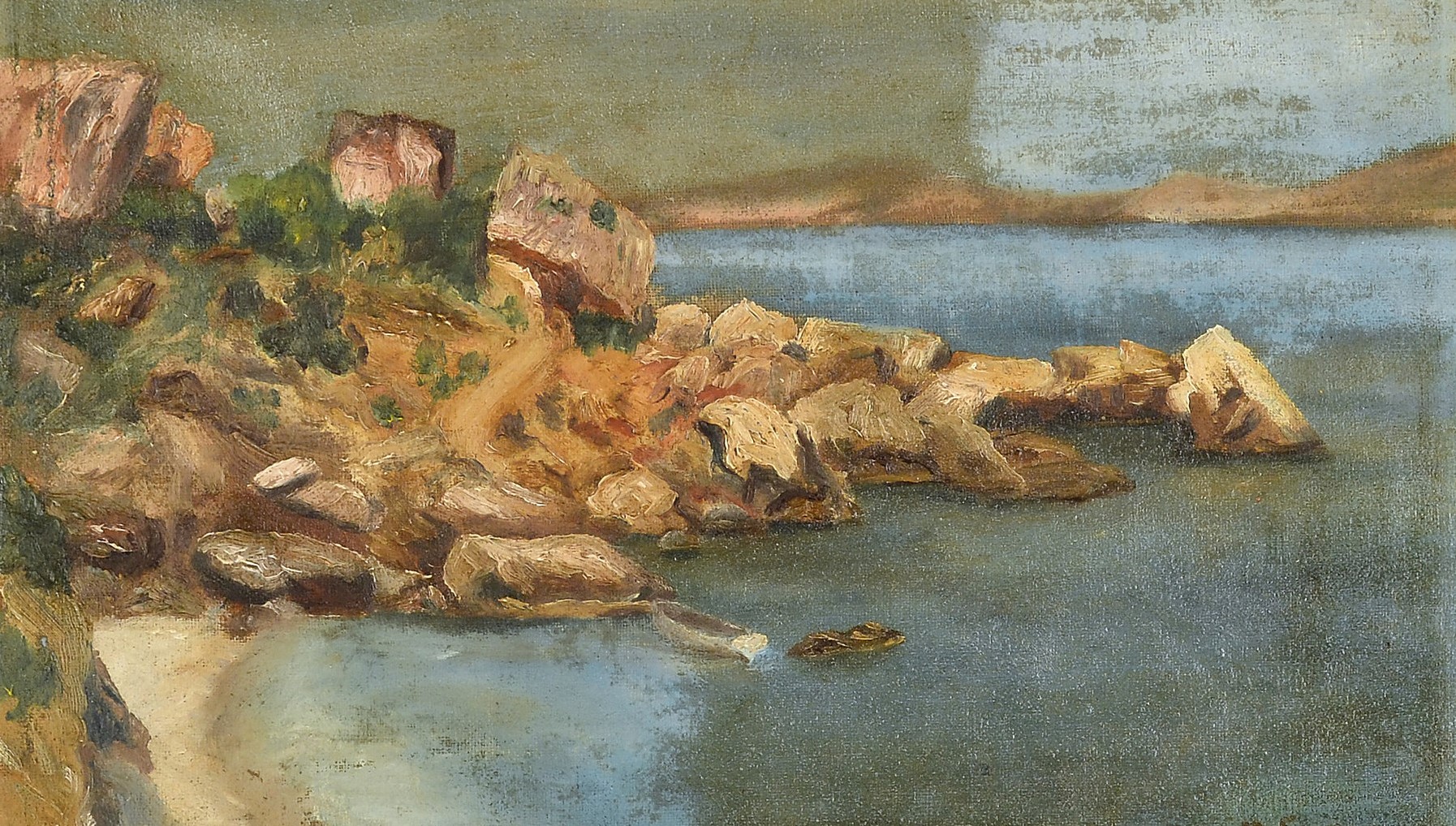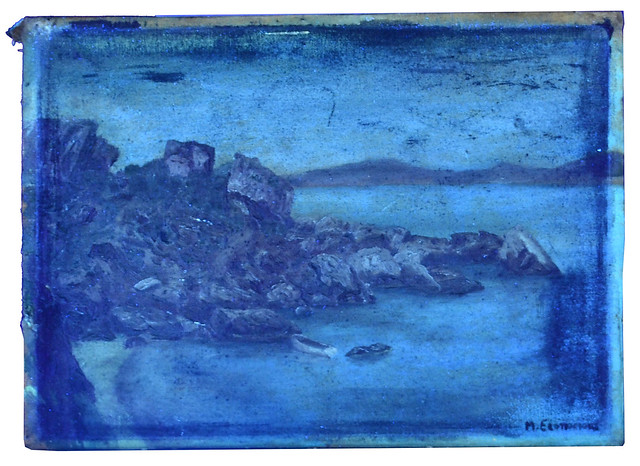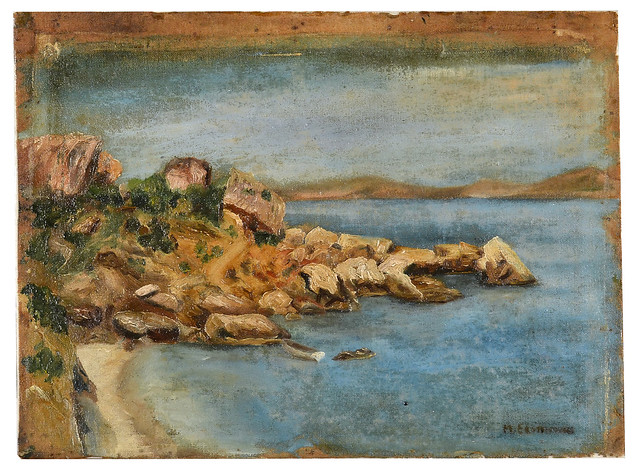This sunny coastal scene was painted by Michalis Economou, a Greek artist who first learned painting techniques under the tutelage of Konstantinos Volanakis, also known as the “father of Greek seascape painting.” Economou then travelled to Paris to study at the Ecole des Beaux-Arts from 1909-1913. Although he lived in the big city for nearly 5 years, Economou’s oeuvre consists mainly of serene, rustic landscapes.
Before Treatment
Verso Before Treatment
When this seascape arrived at The Center, the painting was thoroughly examined. The paint layer is characteristic of thinly applied oil and is executed on an unprimed, lightweight linen canvas. Curiously, the canvas was loosely wrapped around cardboard, instead of a wooden stretcher, which is more common. The canvas exhibited soft deformations throughout, in addition to slight abrasions from the frame on all sides. The paint layer had scratches measuring 1” to 5” in size. However, before cleaning had begun, it was speculated that these scratches had only penetrated the grime and varnish; any damage to the paint layer was minimal.
Before Treatment- under raking light, to show deformations in the canvas
Before Treatment- Under UV light, to show varnish
The painting was signed by the artist in the lower, right-hand corner “M. Economou.” The work was coated in a layer of natural varnish that had discolored over time and had become difficult to remove. Over the varnish, there was a heavy grime layer.
During Treatment- after initial surface cleaning
During Treatment- partial varnish removal
With the treatment proposal approved by our client, our conservator began to clean the painting. Once the grime was removed, the conservator began to carefully remove the discolored varnish to the extent safely possible.
This painting presented a difficult challenge as it was not safe to remove all the varnish without damaging the thinly painted passages. Therefore, the conservator again met with the client to discuss these limitations and suggested leaving the varnish in these areas and inpainting the areas to emulate the original passages using reversible, conservation-grade paints once the piece was stabilized. It is always important to our conservation team to use reversible techniques, so that as technology progresses, new approaches which may be more conducive can be carried out.
The next step for our conservator was to remove the canvas from the cardboard. In order to flatten deformations, a combination of suction, humidity, and weight techniques were used. The canvas was then lined to an archival mat board for support. Once stabilized, the painting was coated with new varnish to saturate the paint layer and minimal inpainting was carried out over the remaining discolored varnish patches to integrate it to the color of the surrounding paint.
To finish the project, our client elected to have his painting reinstalled into its original frame.
During Treatment- After new varnished application and before inpainting
The approach taken with this painting, although not perfectly ideal, will allow a future conservator to easily remove the areas of inpainting, and potentially remove the rest of the old varnish if and when new technologies become available to them. But for the time being, our client can now appreciate the vivid colors of the original palette of his painting without being distracted by the old, discolored varnish.
After Treatment- UV image of painting after treatment showing remaining varnish and inpainting
After Treatment










